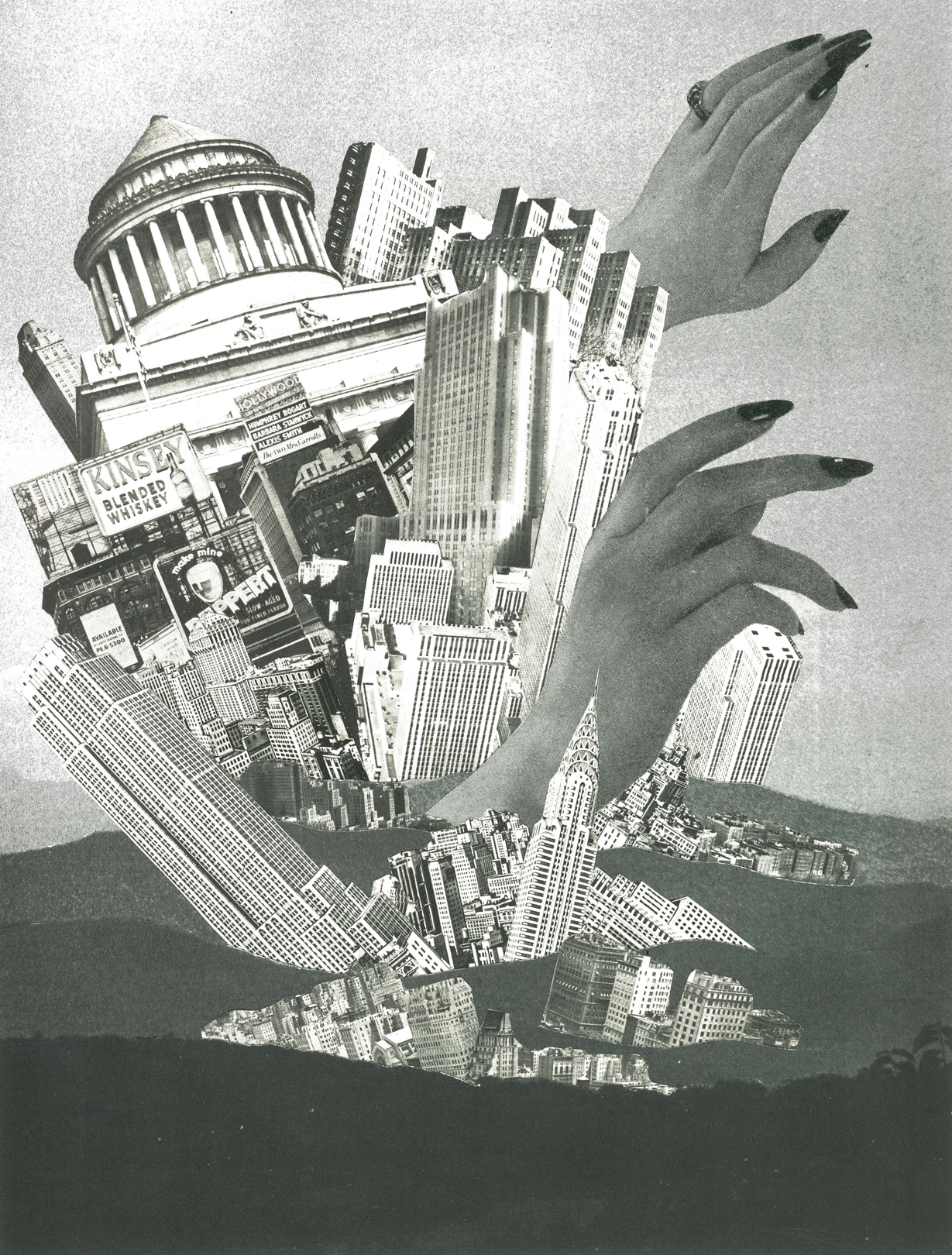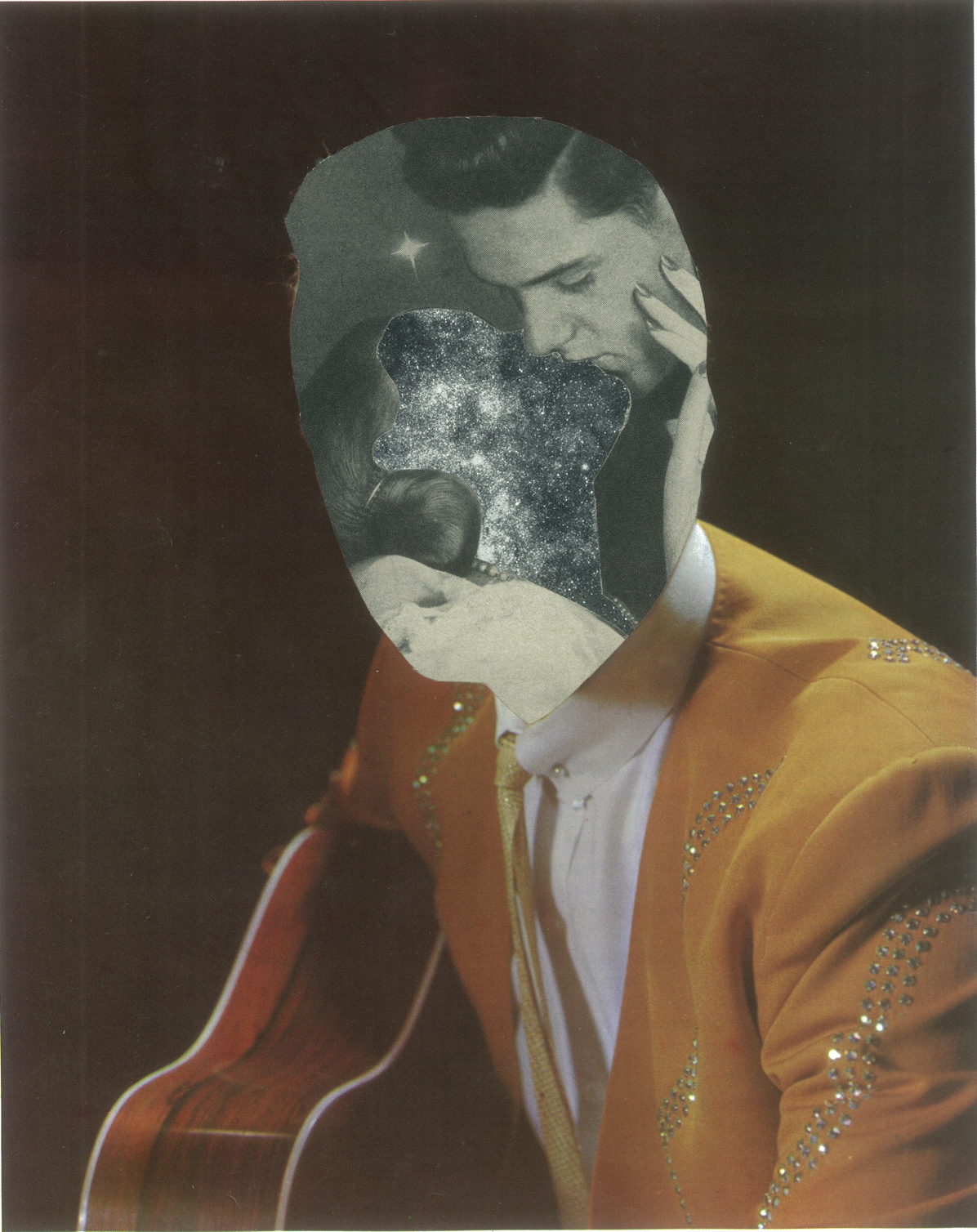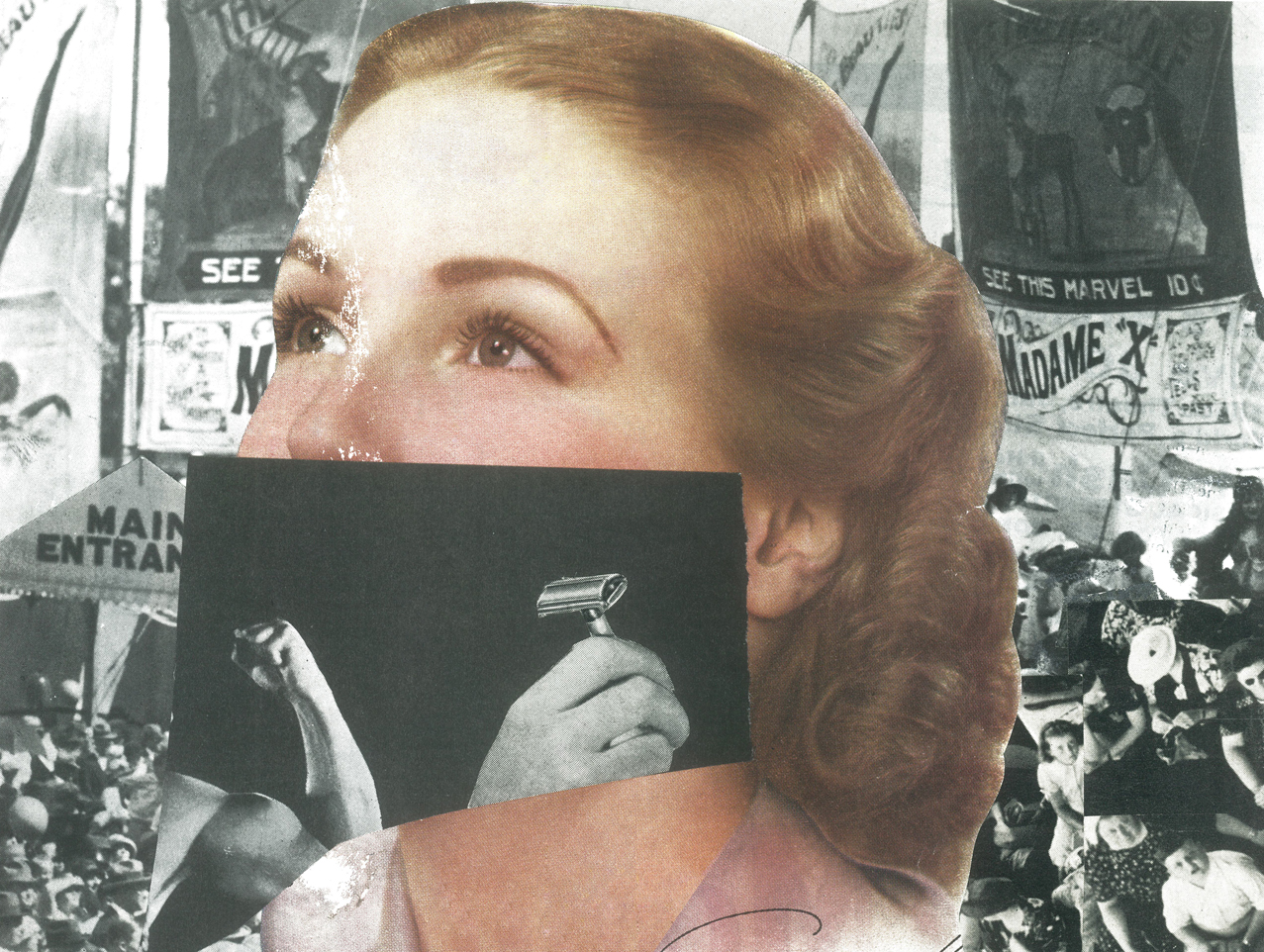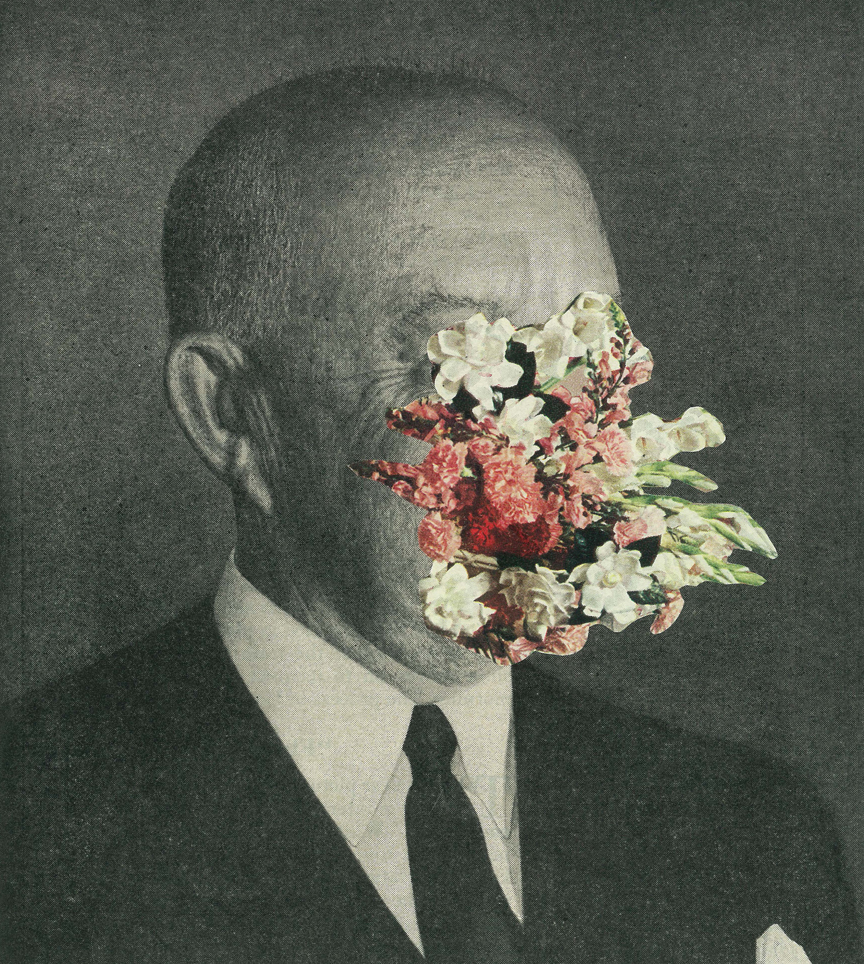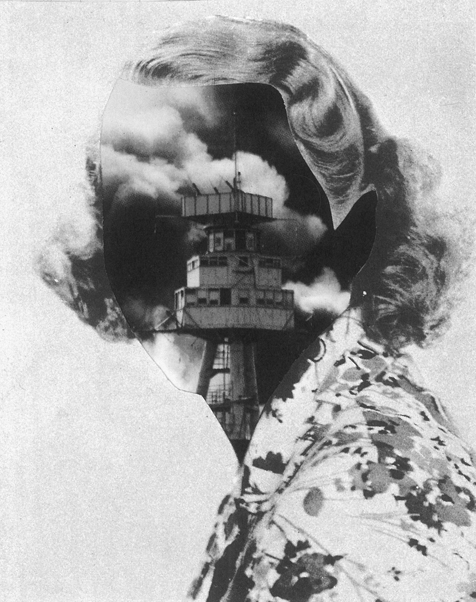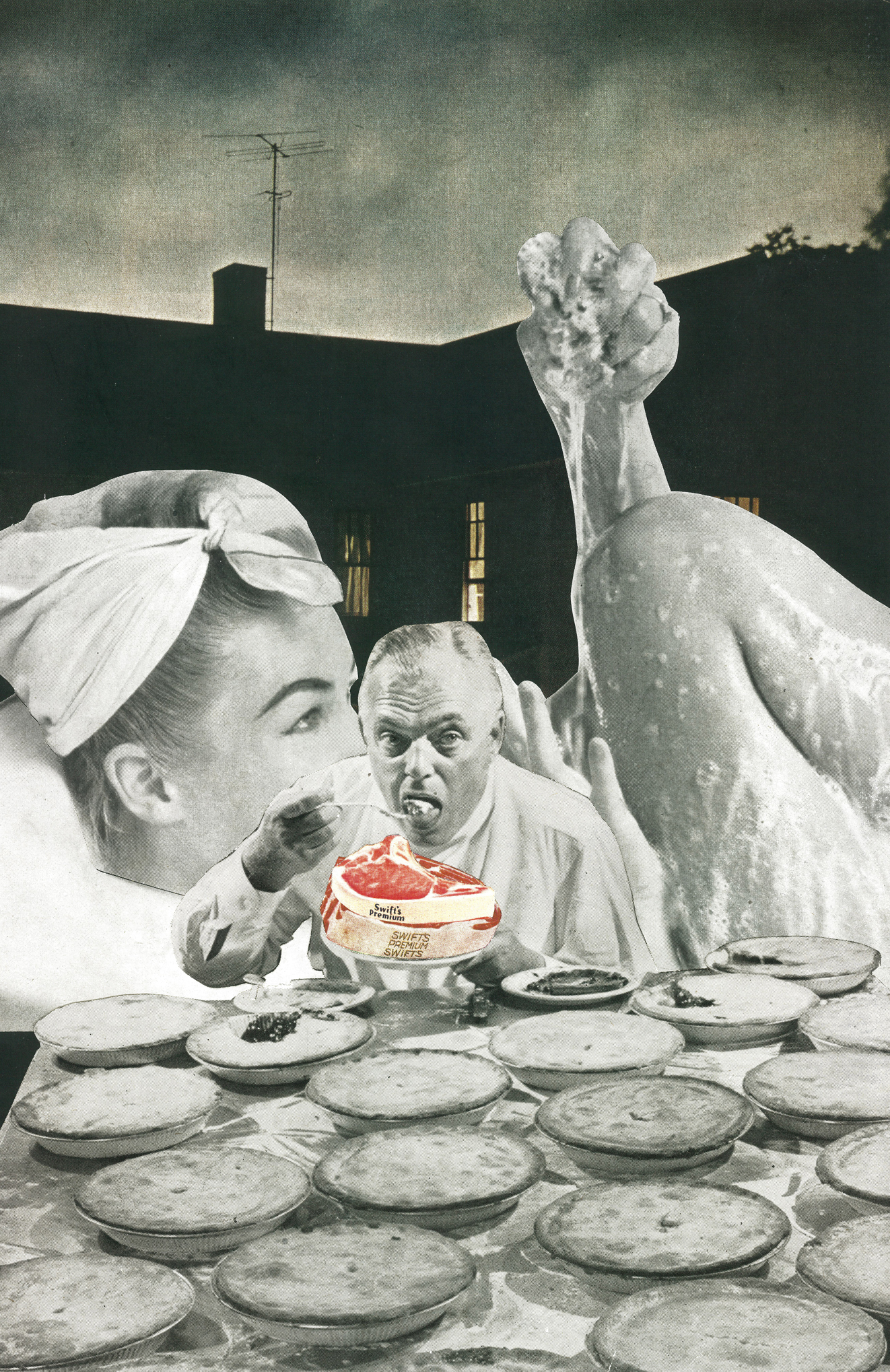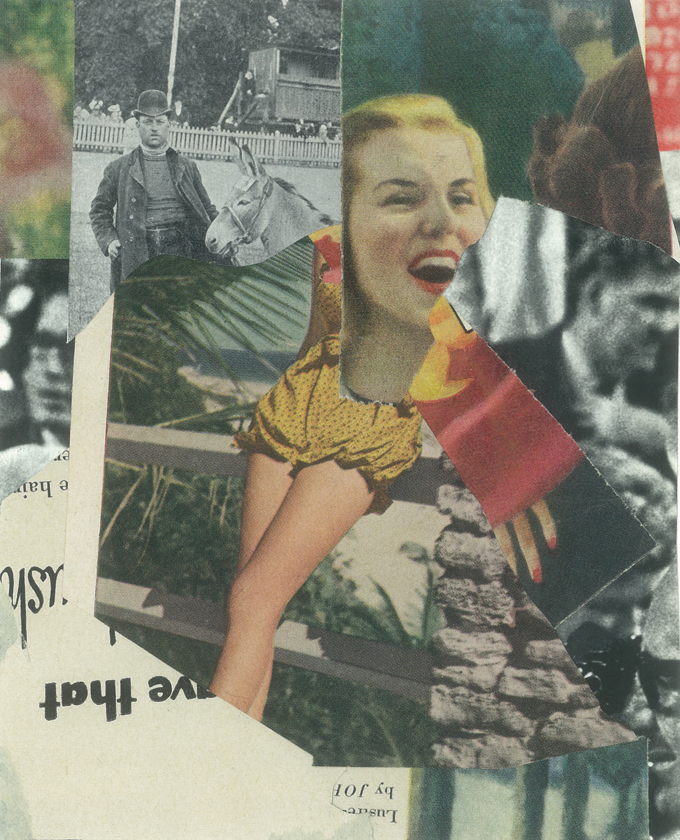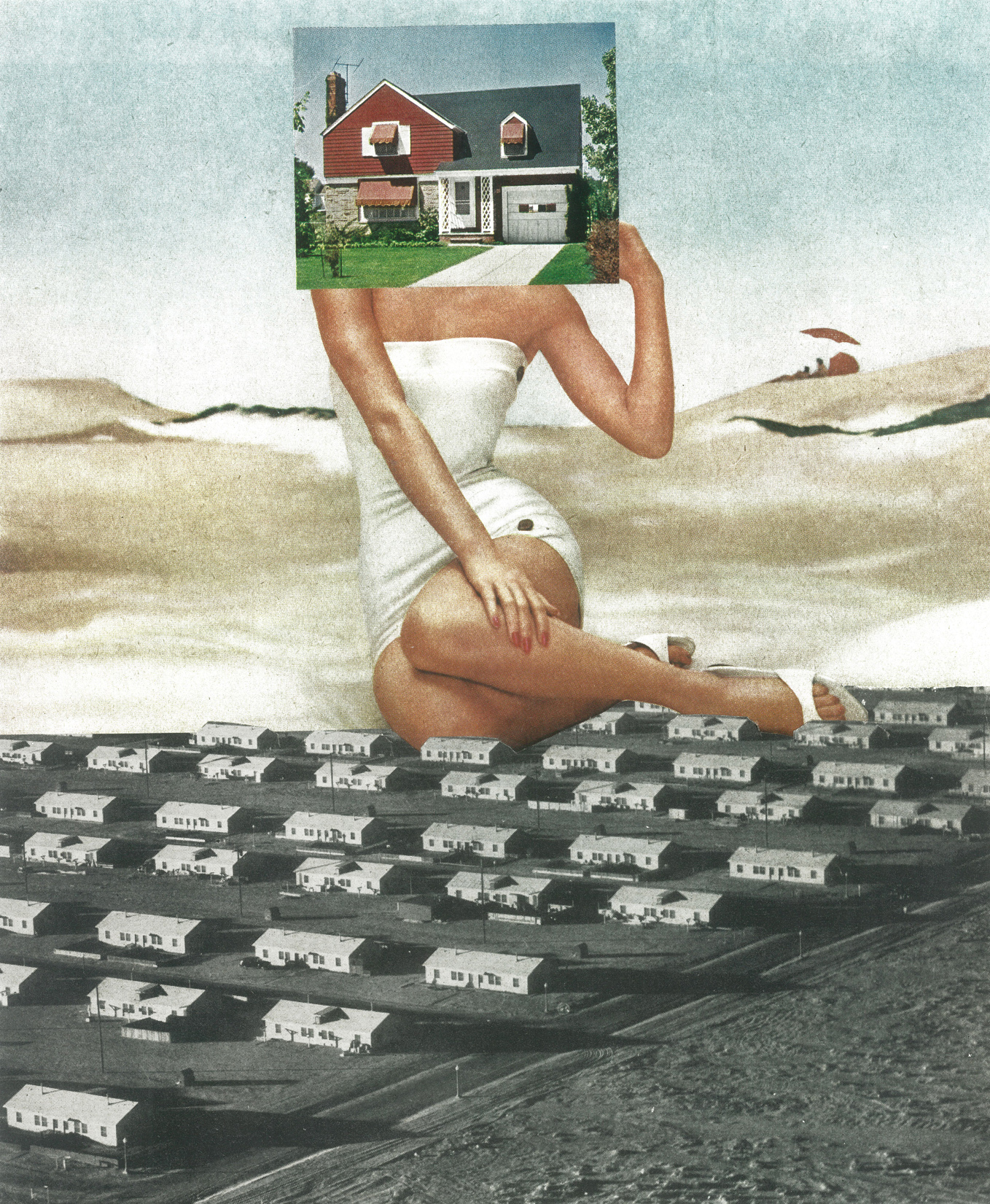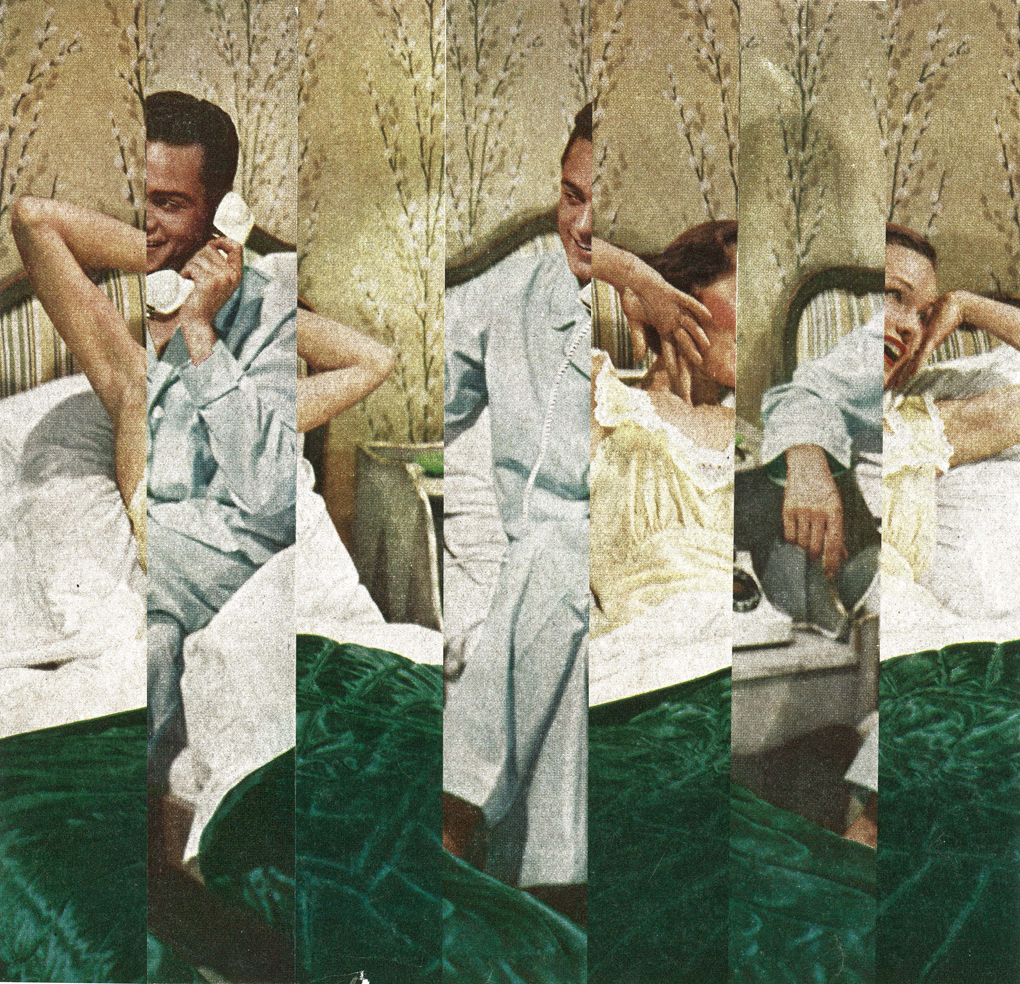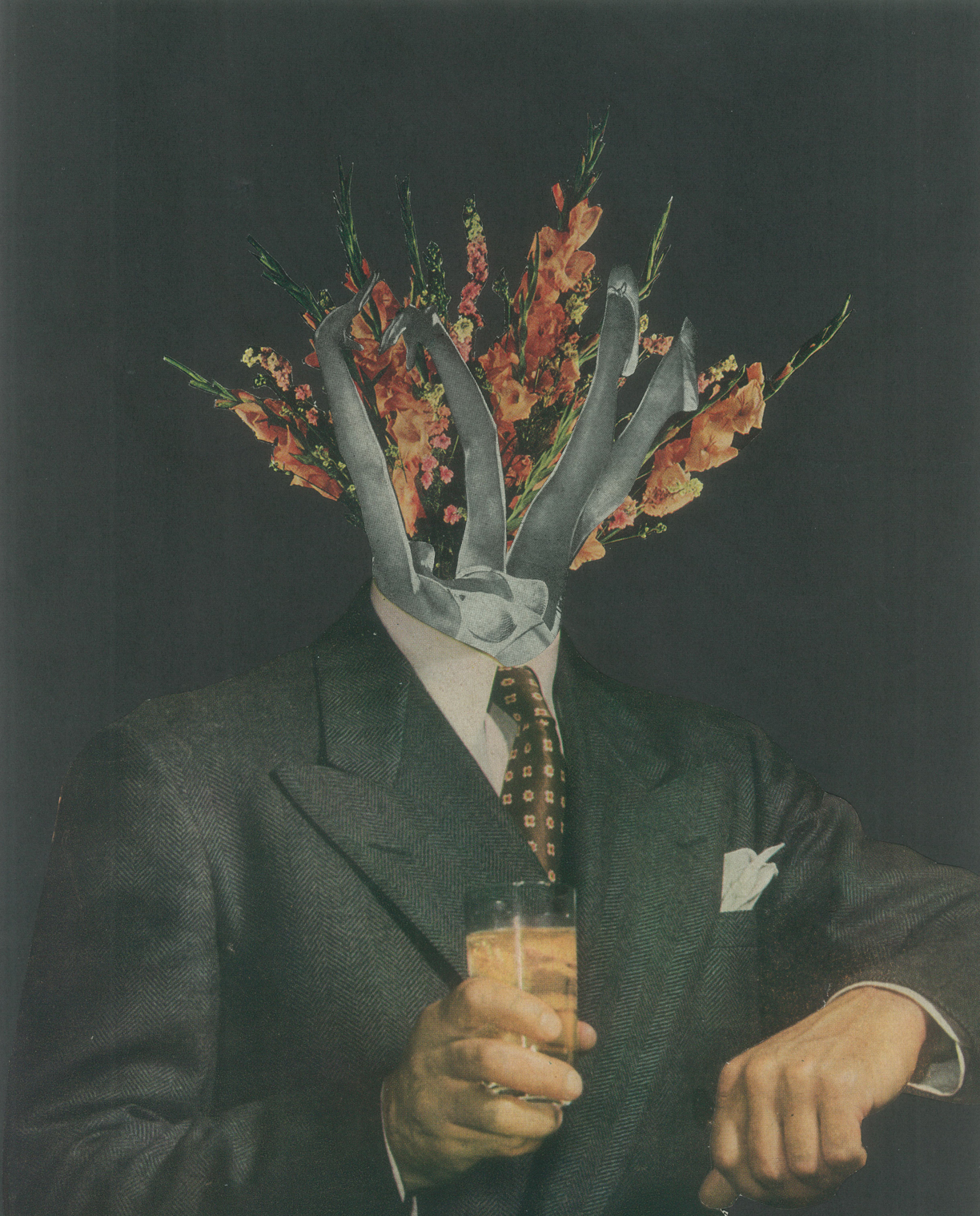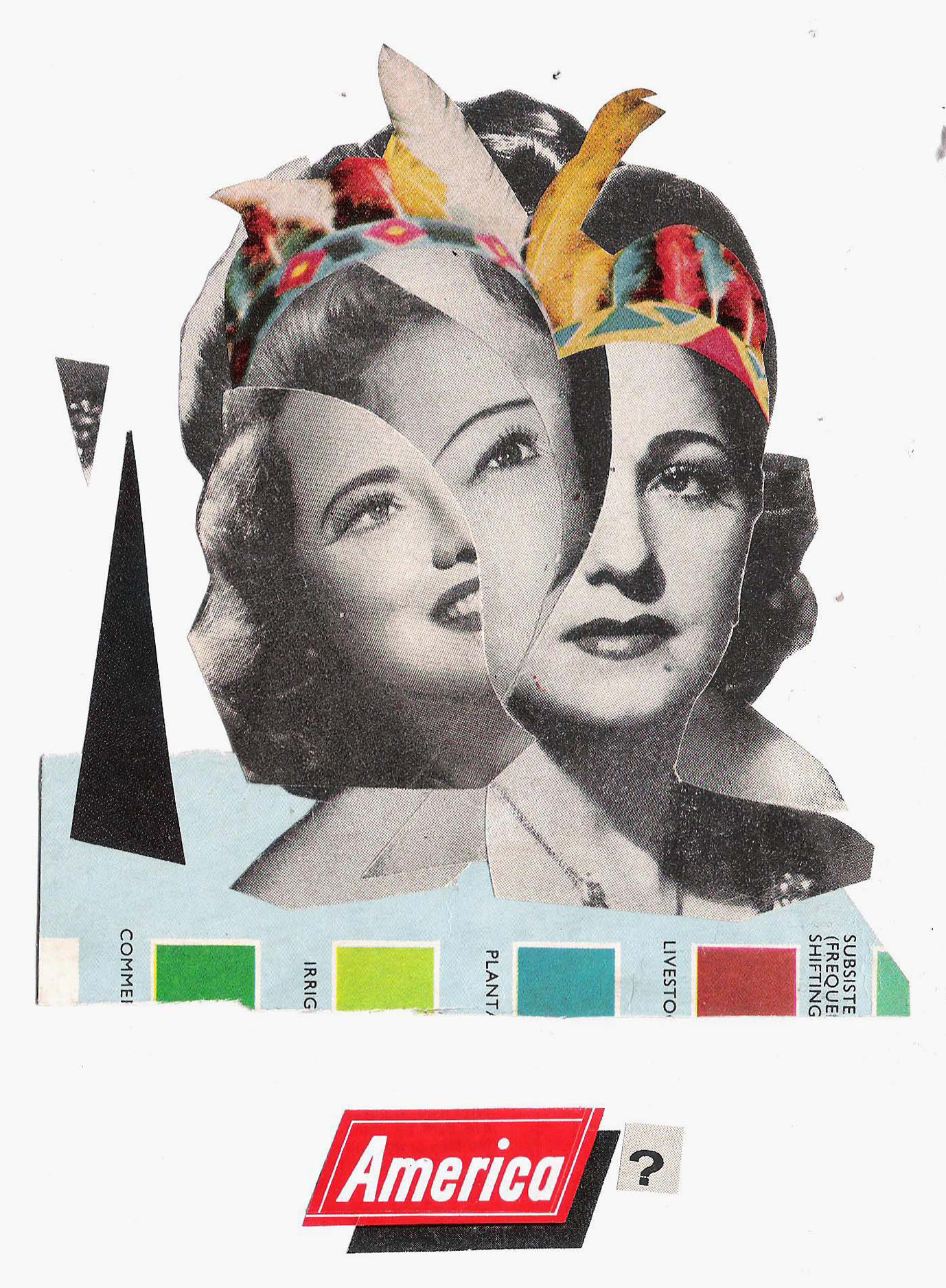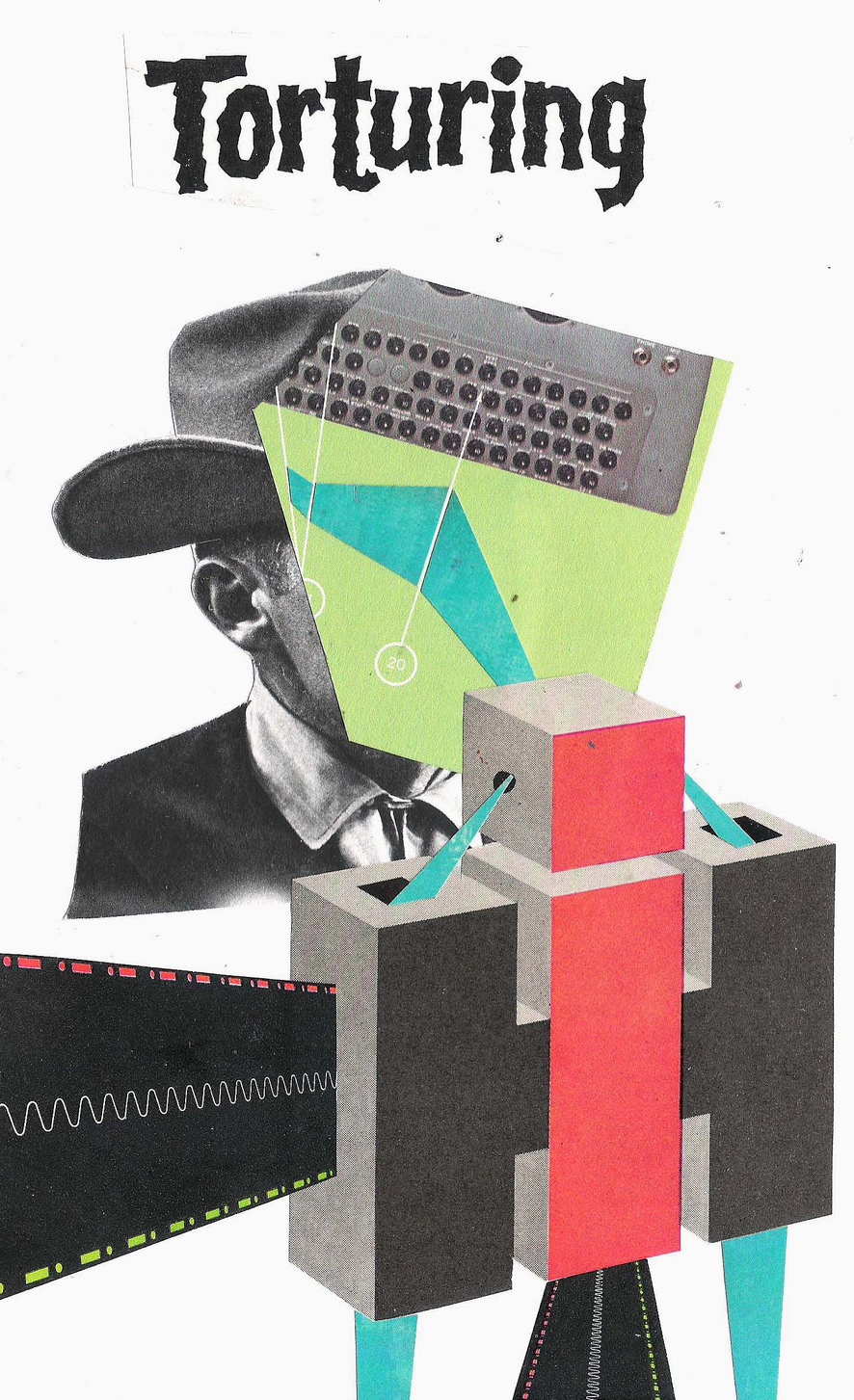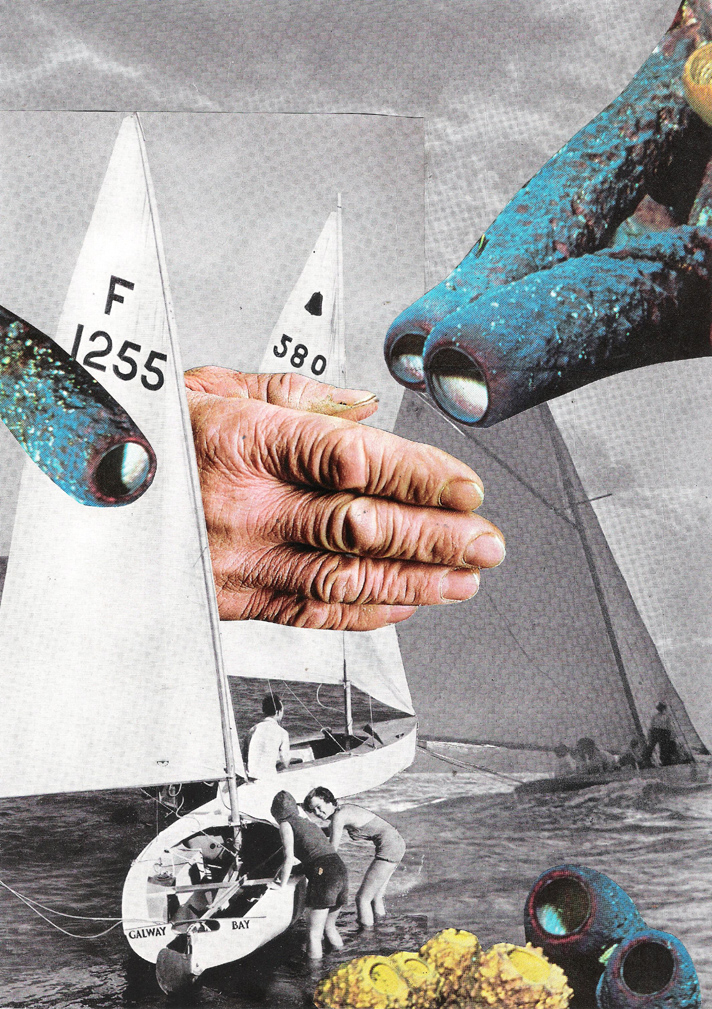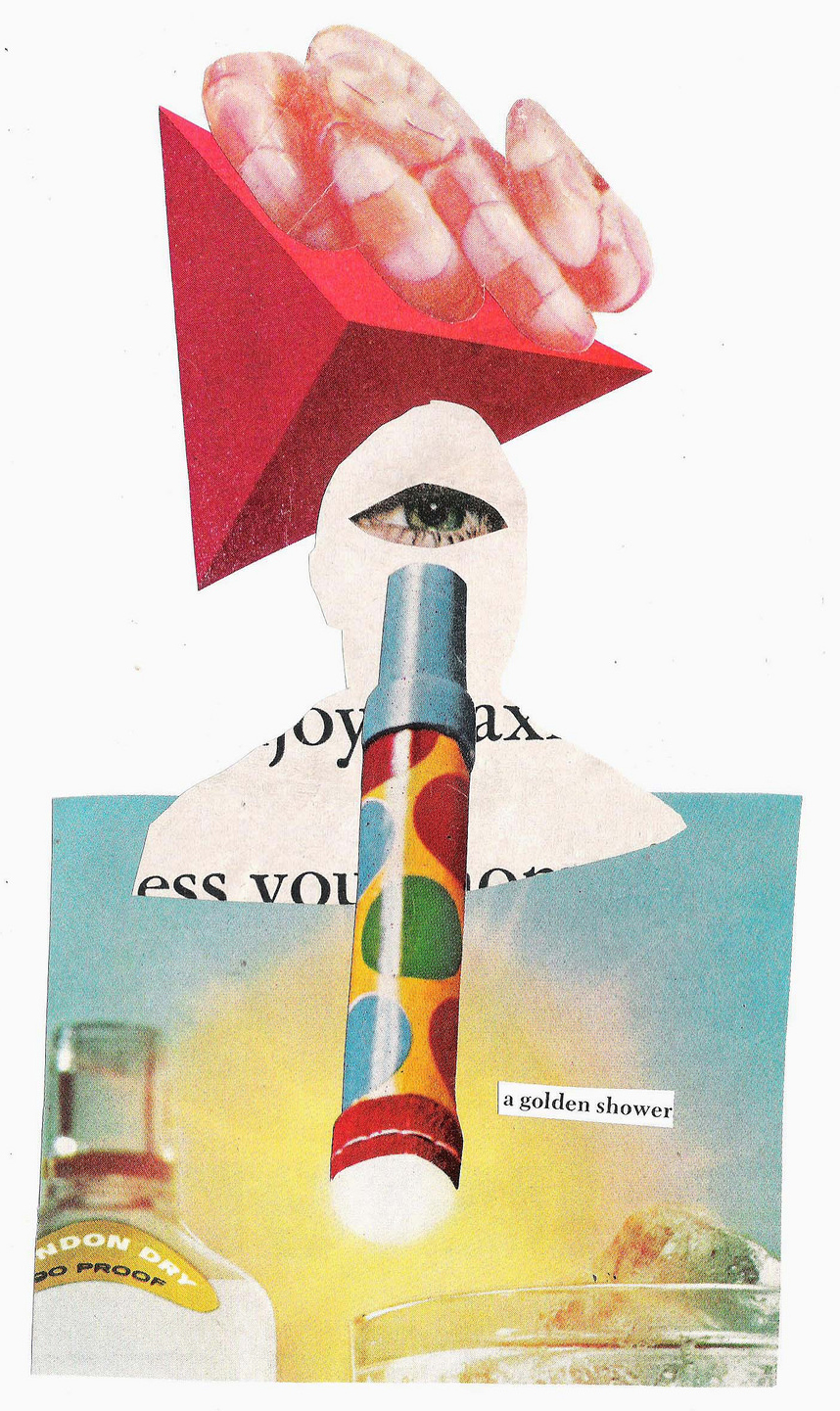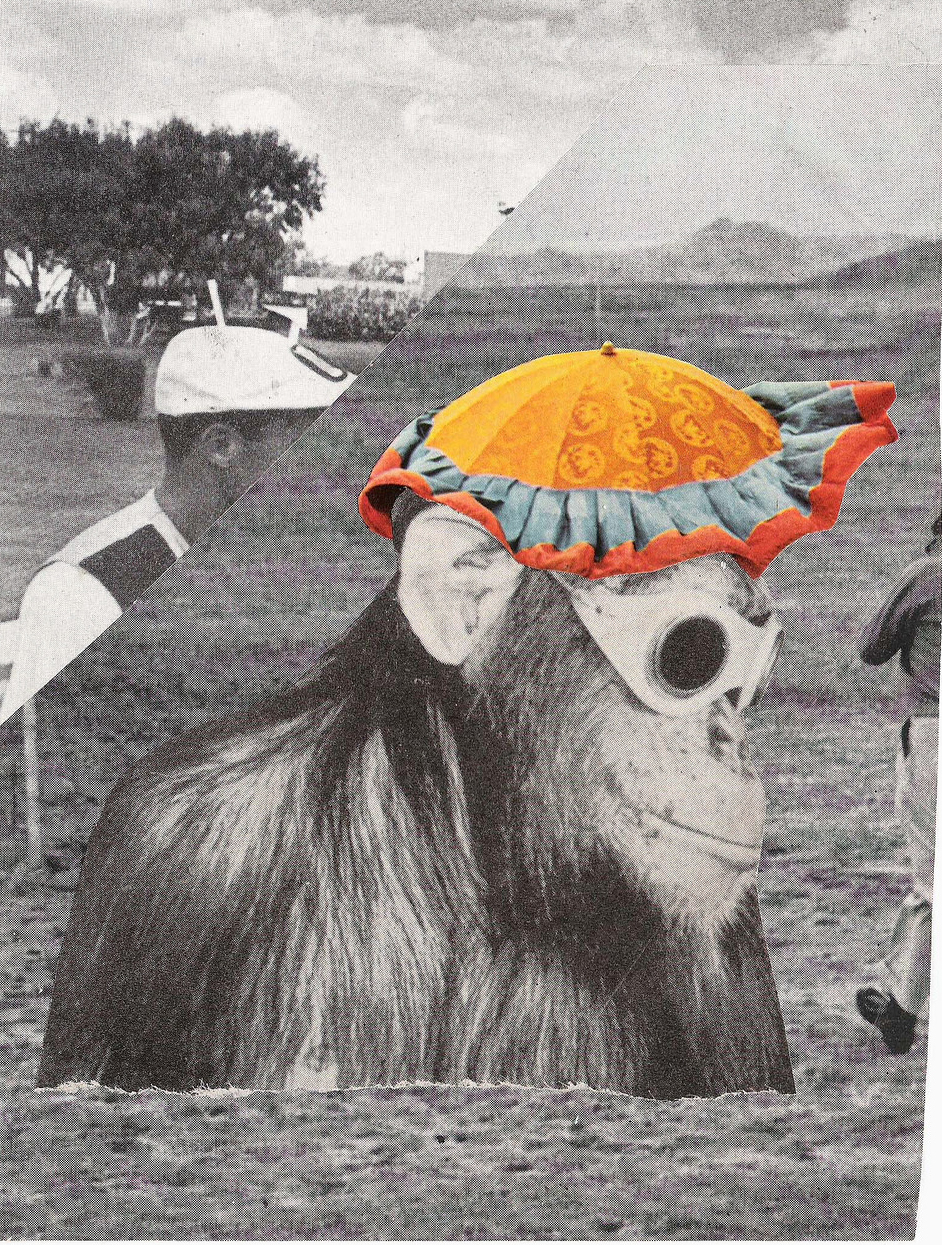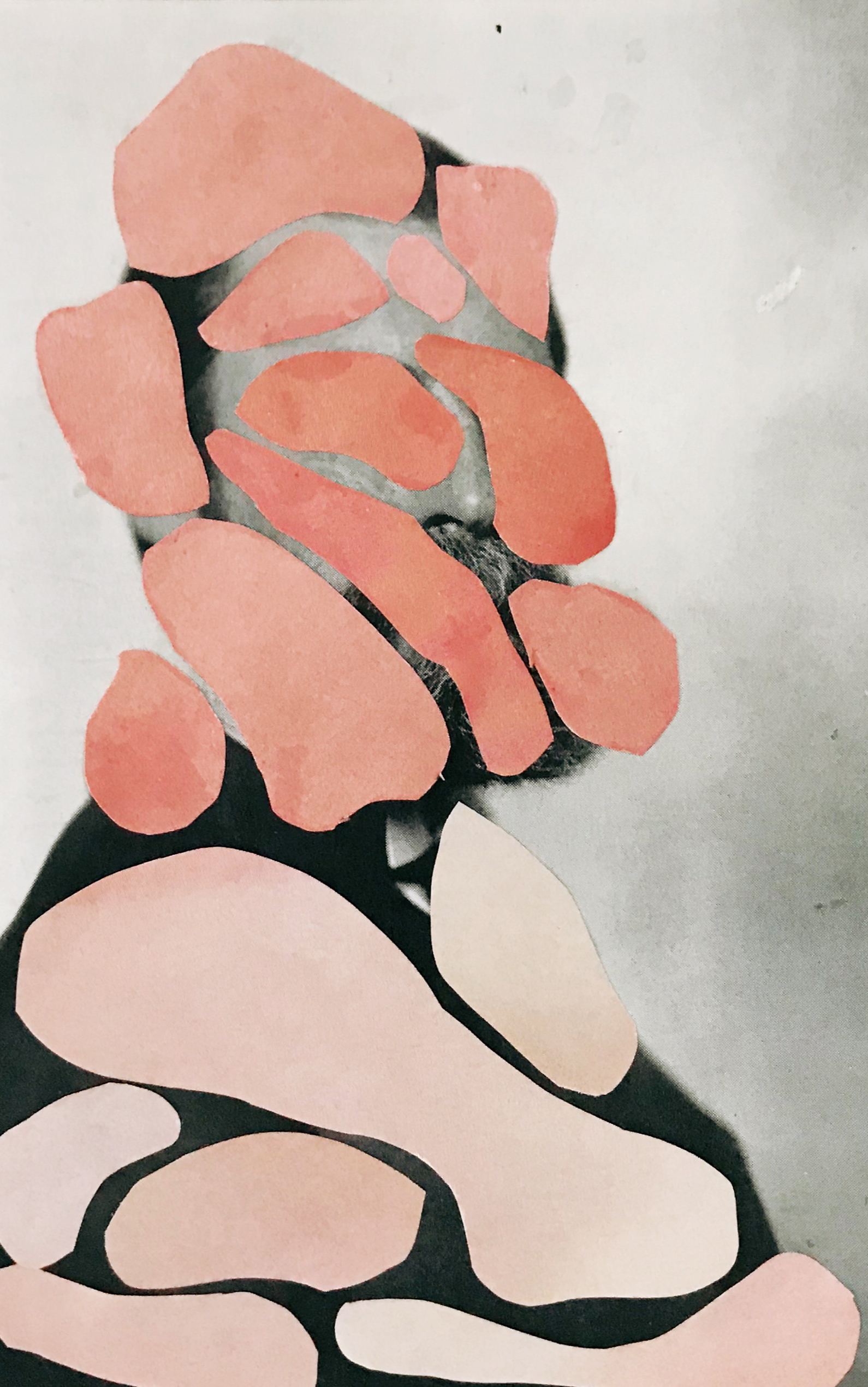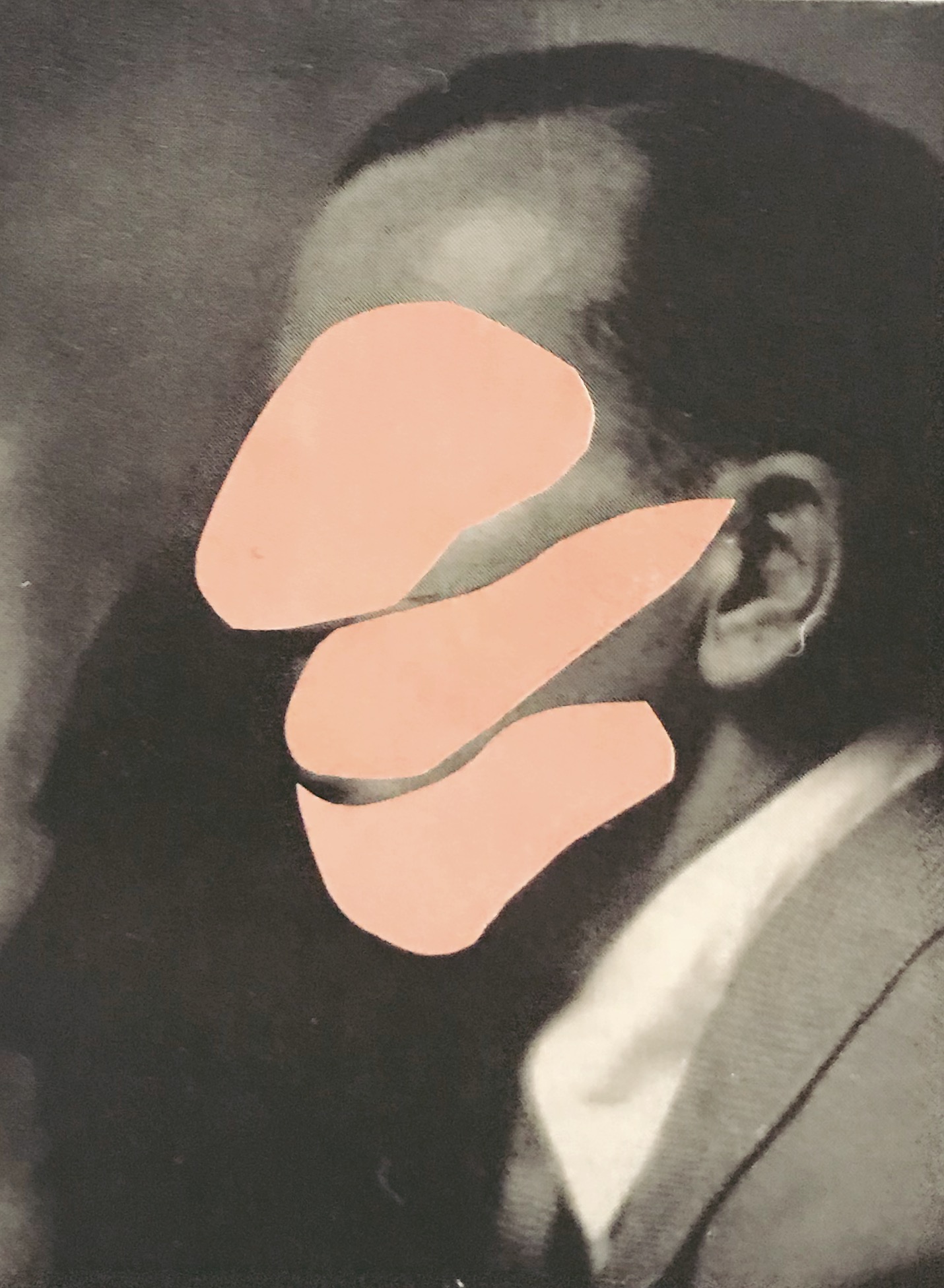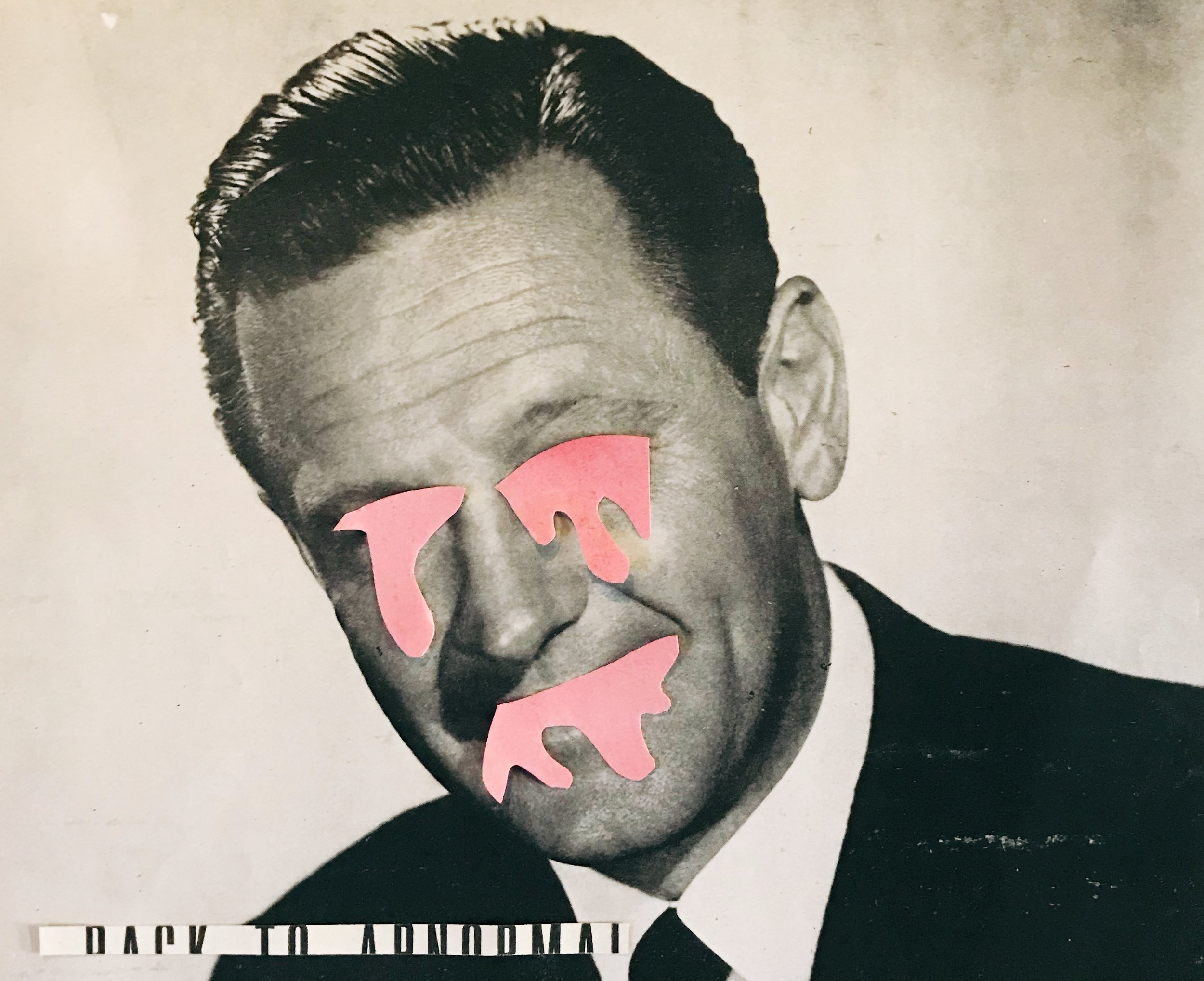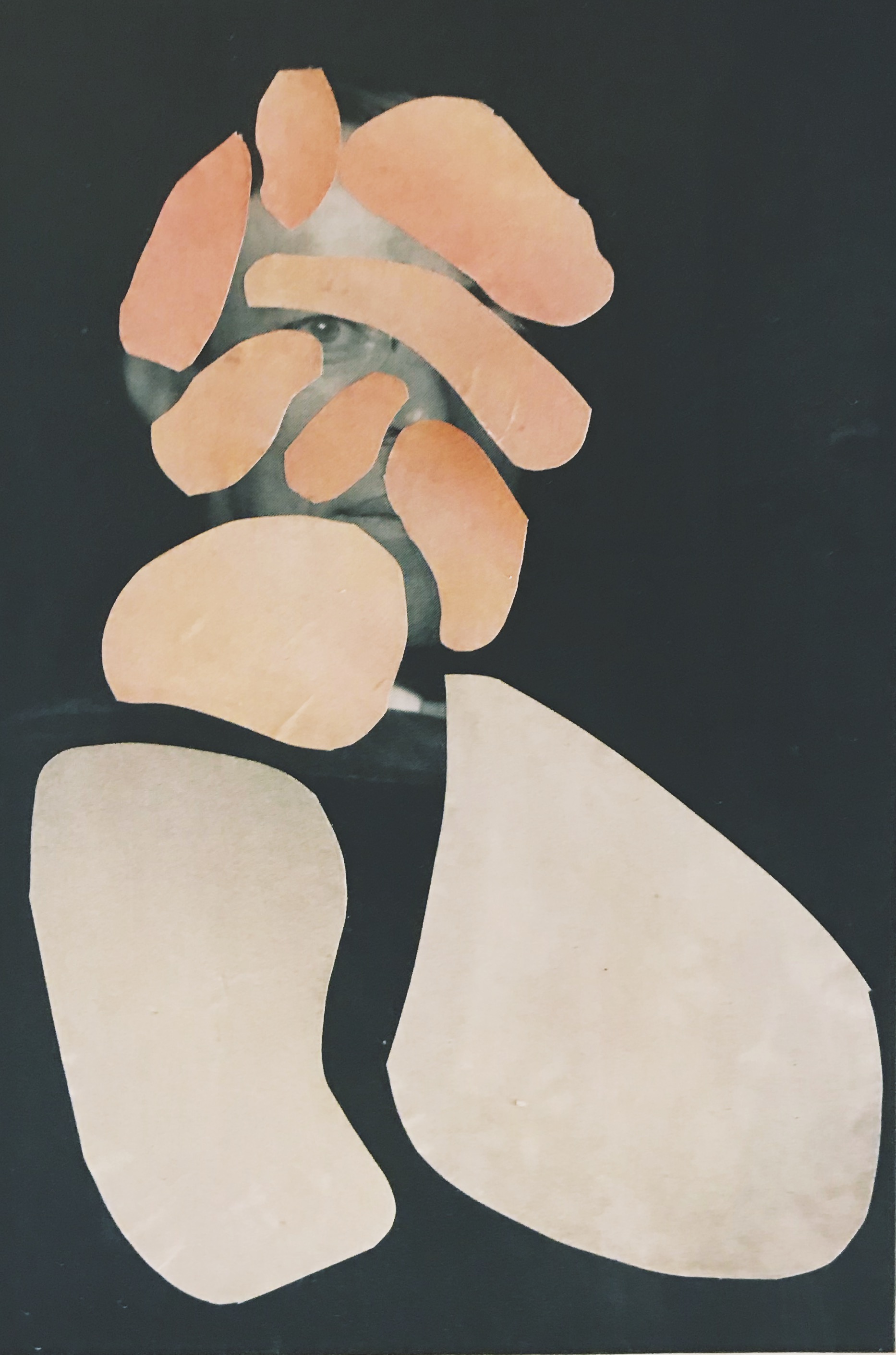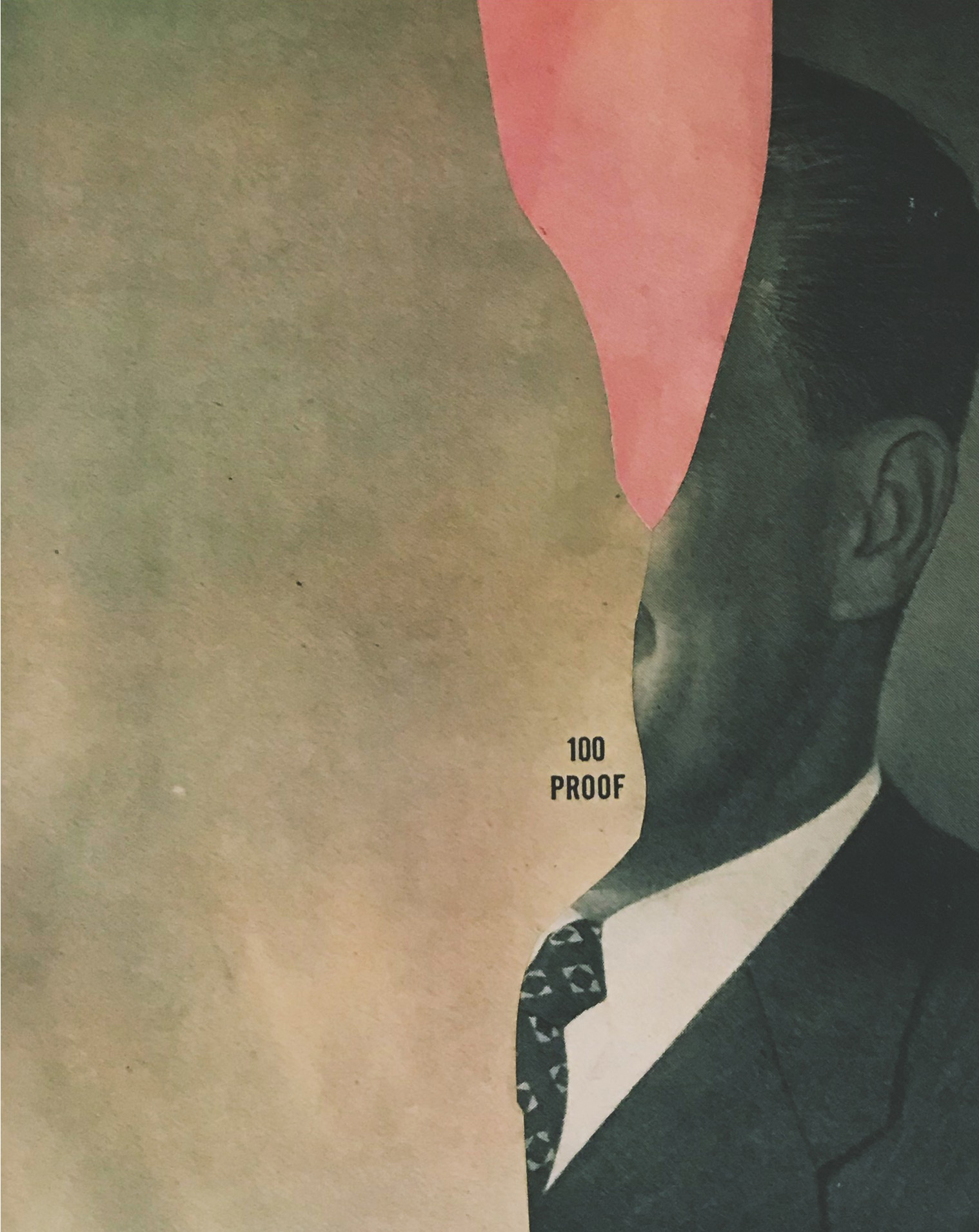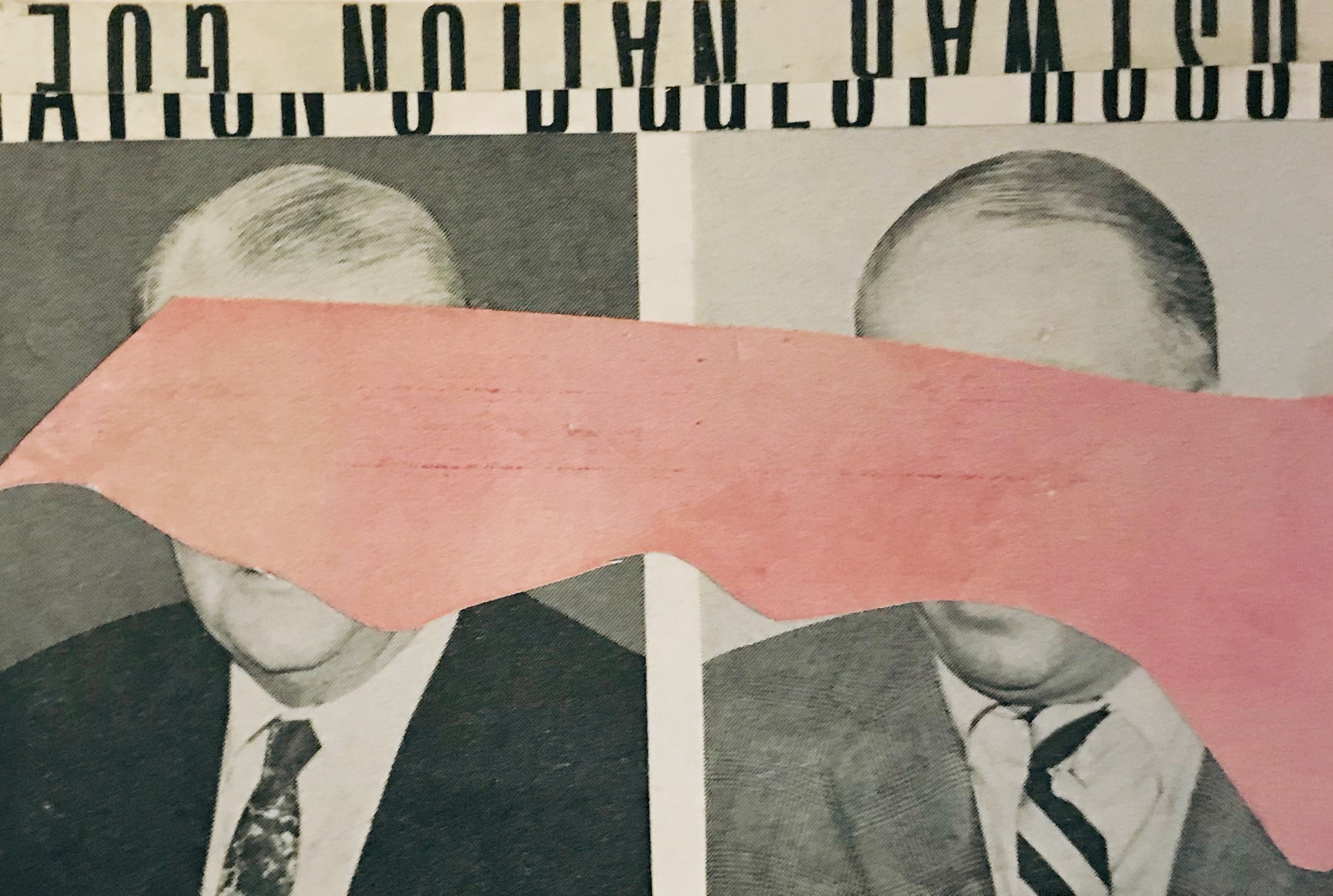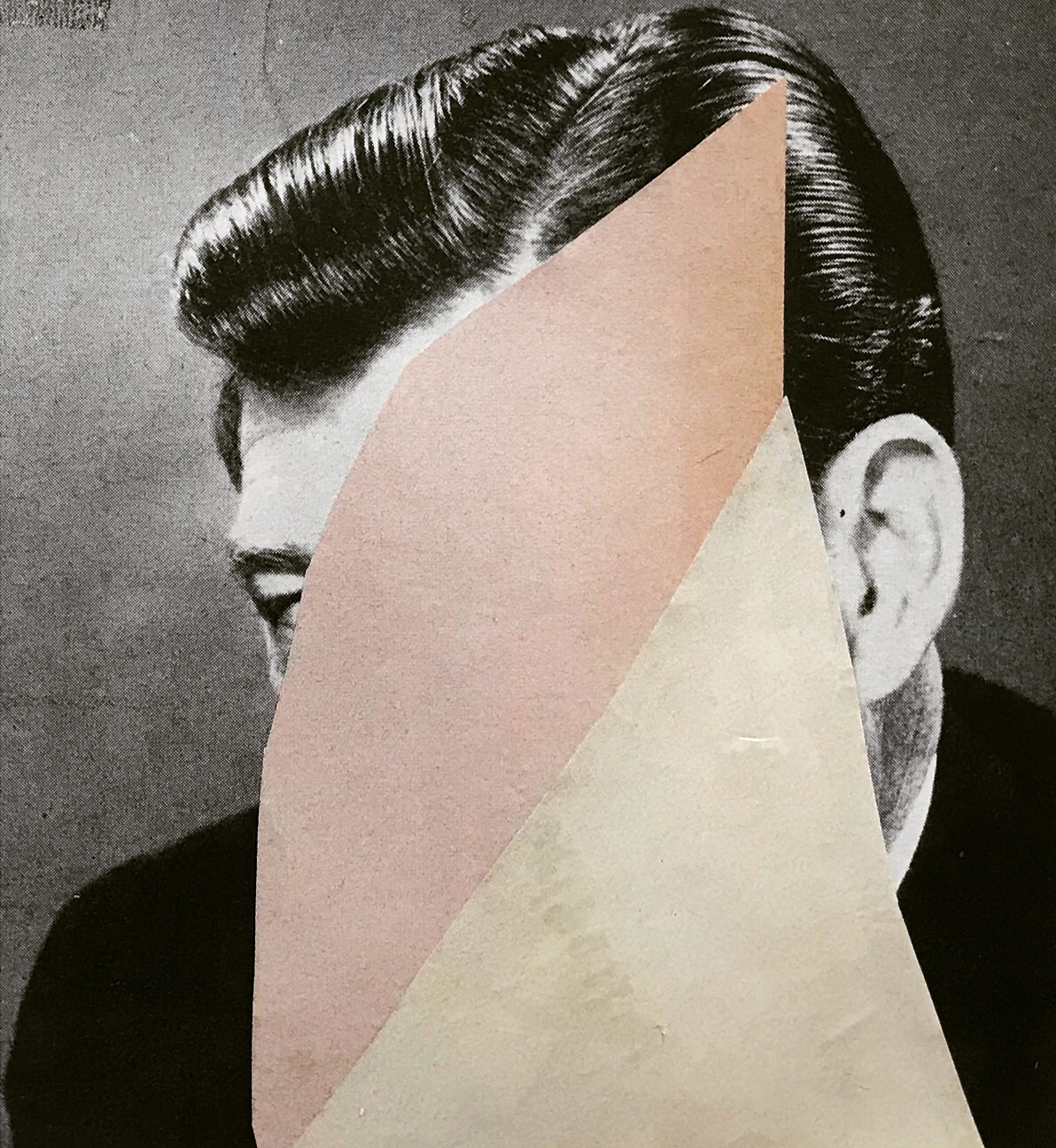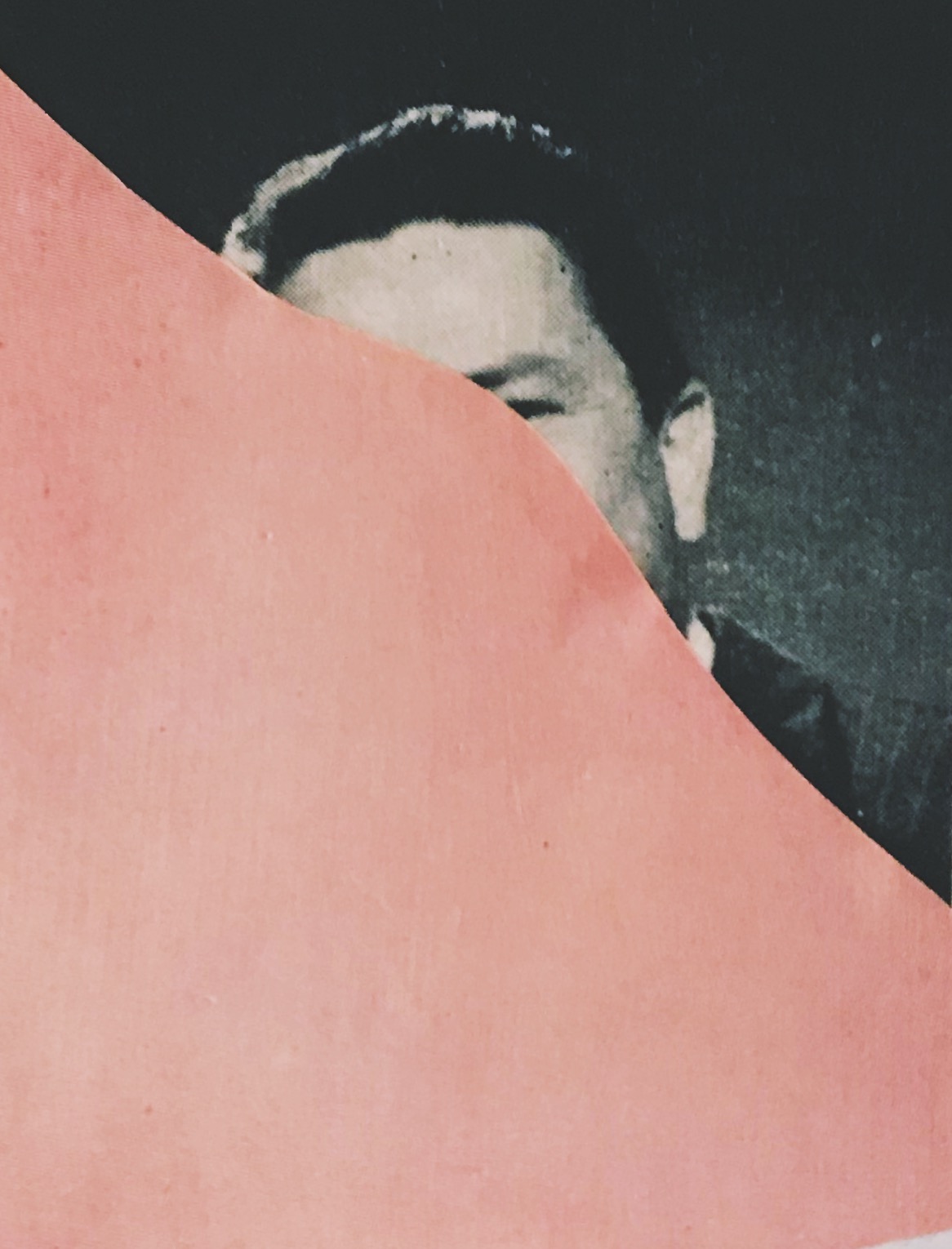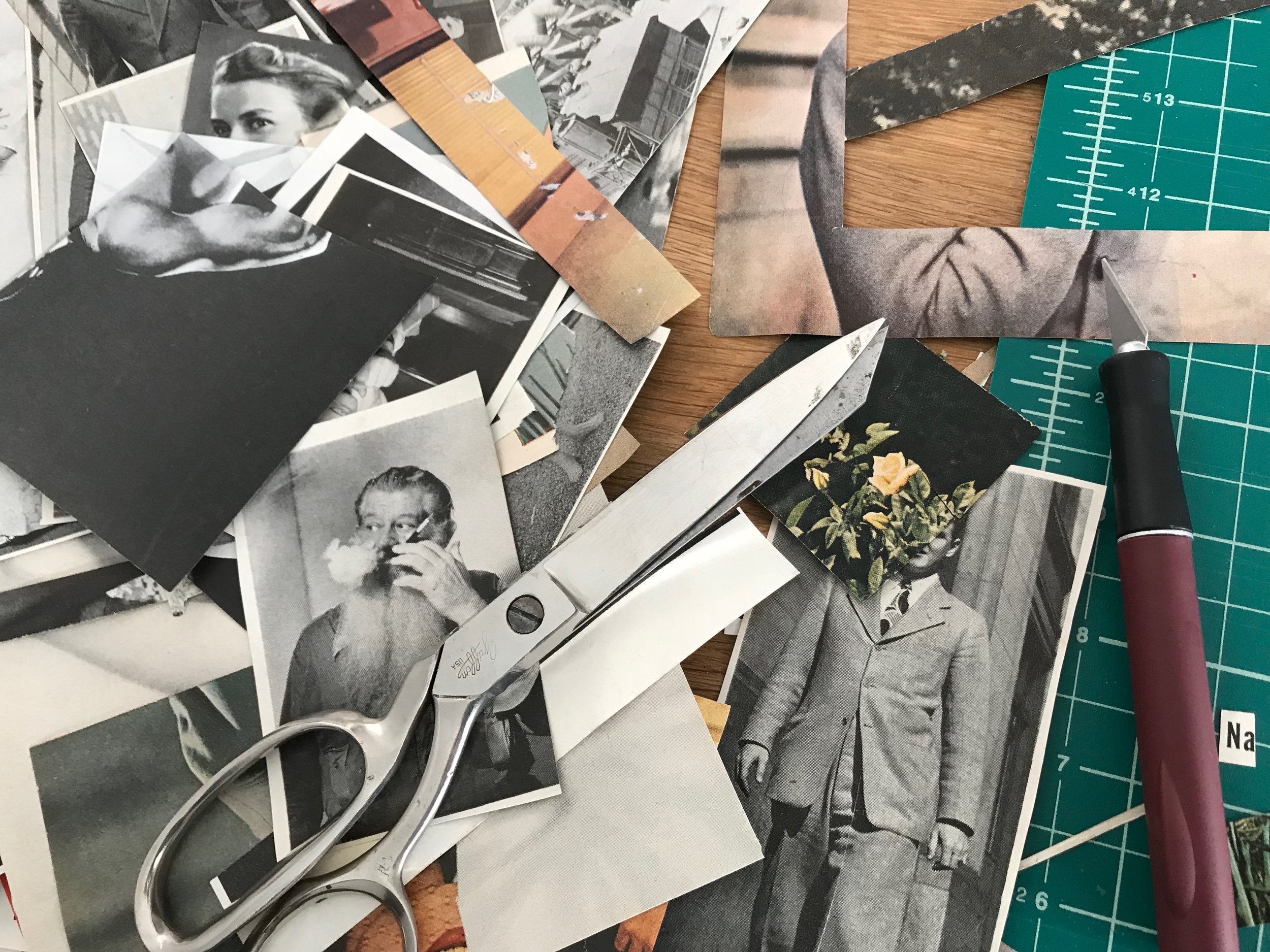This week, I was fortunate enough to sell three collages to a collector here in Pittsburgh. When I dropped off the work, the buyer made a comment about how long it must take to make each piece, that they must take a really really long time.
Looking at the pieces he bought, which were mostly simple constructions—5 or fewer pieces of paper glued together—I realized that the actual assemblage of the pieces probably took less than an hour.
But I also realized that wasn’t completely accurate, that each piece had taken much much longer to come together, that each piece was probably years in the making.
Each piece is years in the making.
I don’t know why this hadn’t occurred to me before, but I’m grateful for his observation because it jarred loose my brain enough to see that the trajectory of every collage—from conception to completion—actually looks like this:
- Find the source material (an old book, rescued from a junk shop, for example);
- Explore the source material (flip through the pages, again and again);
- Remove the images and pages from source material that “speak” to me;
- Add images and pages to piles of other images and pages removed from other source materials;
- Sort the through piles (a weekly ritual) and re-sort;
- Cut images and pages into pieces;
- Add these pieces to piles of other pieces;
- Cut these pieces into smaller and smaller pieces, and add these to piles of scraps;
- Sort through scraps (a daily ritual) and re-sort;
- Place scraps and images next to, and on top of, one another;
- Move scraps and images around until one or two or five begin to feel “right” together;
- Maneuver and juxtapose those one or two or five scraps and images until they finally, finally “fit” together;
- Glue; and
- Repeat
The realization I had is that sometimes, it can take years until a scrap of paper finds its way into a final collage—that I can look at the same image or scrap a hundred times before it finds its way into a collage (and if you take into account the age of the source material ... some of my collages were kind-of, sort-of, not really, but technically started 100 years ago when original image was first captured on film).
This process is not an exact science, and, in fact, it more closely resembles the Dada-esque concept of Chance Operations than anything else.
I’ve written about this before (here and here, and you can watch a quick timelapse of the process here), and what I’ve always said is that, for me, collage is about feeling my way through each piece, about the simplicity of and a fascination of paper. It's about sorting through scraps and disparate pieces. It's about pushing on that feeling until something new takes shape.
Sometimes nothing feels right. Sometimes I don't find what I'm looking for (whatever that is). And other times I walk away from my work table with ten newly assembled pieces.
That, in the end, collage is about making connections.
Collage is about making connections: to thoughts and ideas and feelings. And even people.
Usually, that means the connections between two disparate scraps of paper. But more often than not, it's about making deeper connections.
To thoughts or ideas. Or feelings.
Or people.
And that’s the other crazy part to this story. The guy who bought these three pieces, he first encountered them four years ago in a coffee shop that had let me hang my work.
At the time, he wasn’t in position to buy the work, but somewhere in the back of his mind, the work remained, and it was only after we random connected on Instagram that he reached out.
I think about that sometimes. That you never know when something good is going to happen. That even during the long stretches of not selling any work--that during those times when you’re questioning what you’re doing, the quality of the work, whether it’s worth the time, whether what you’re making is any good--that if you just keep showing up, keep doing the work, a connection with happen.
Sometimes it just takes a long time.



